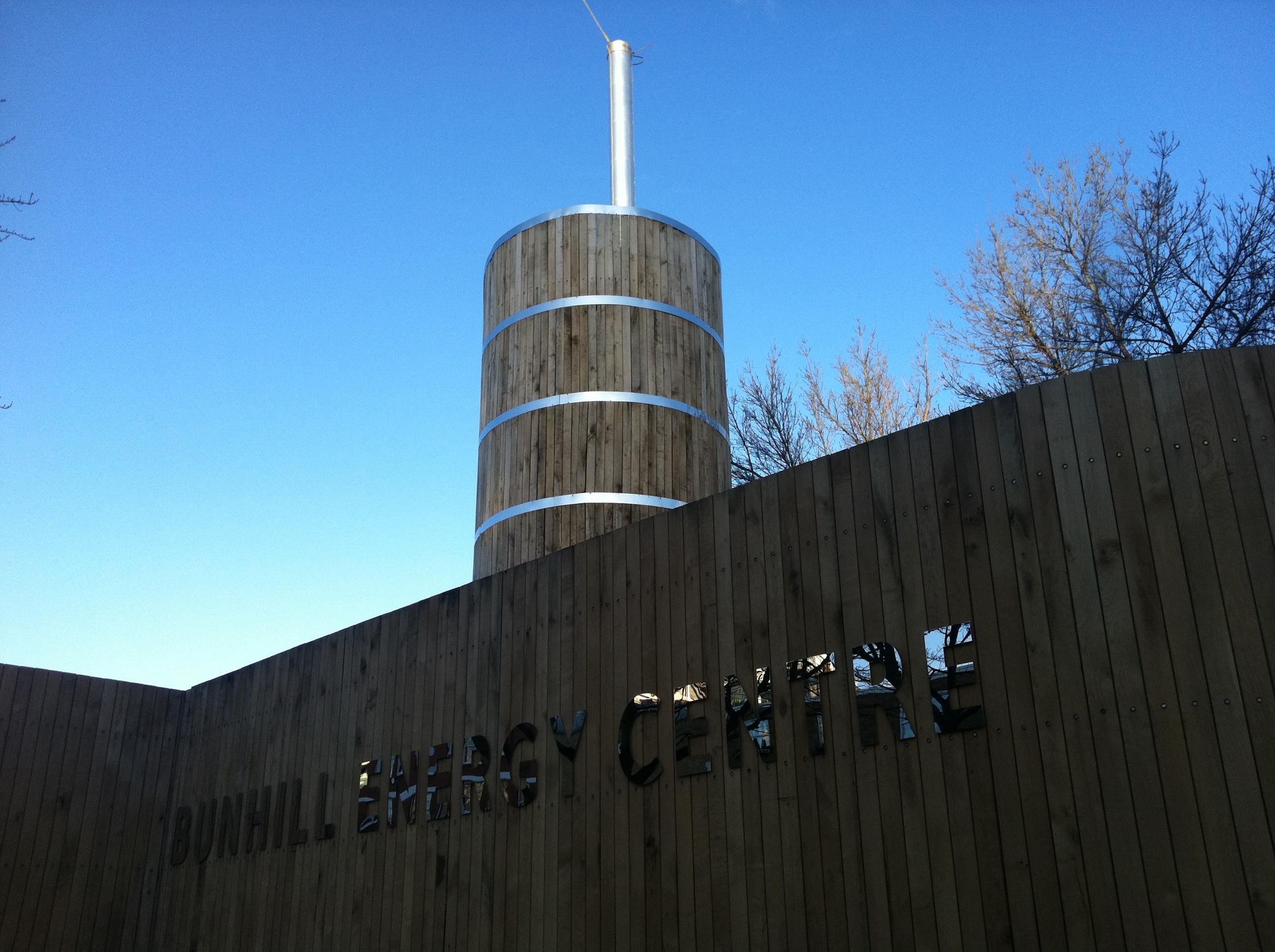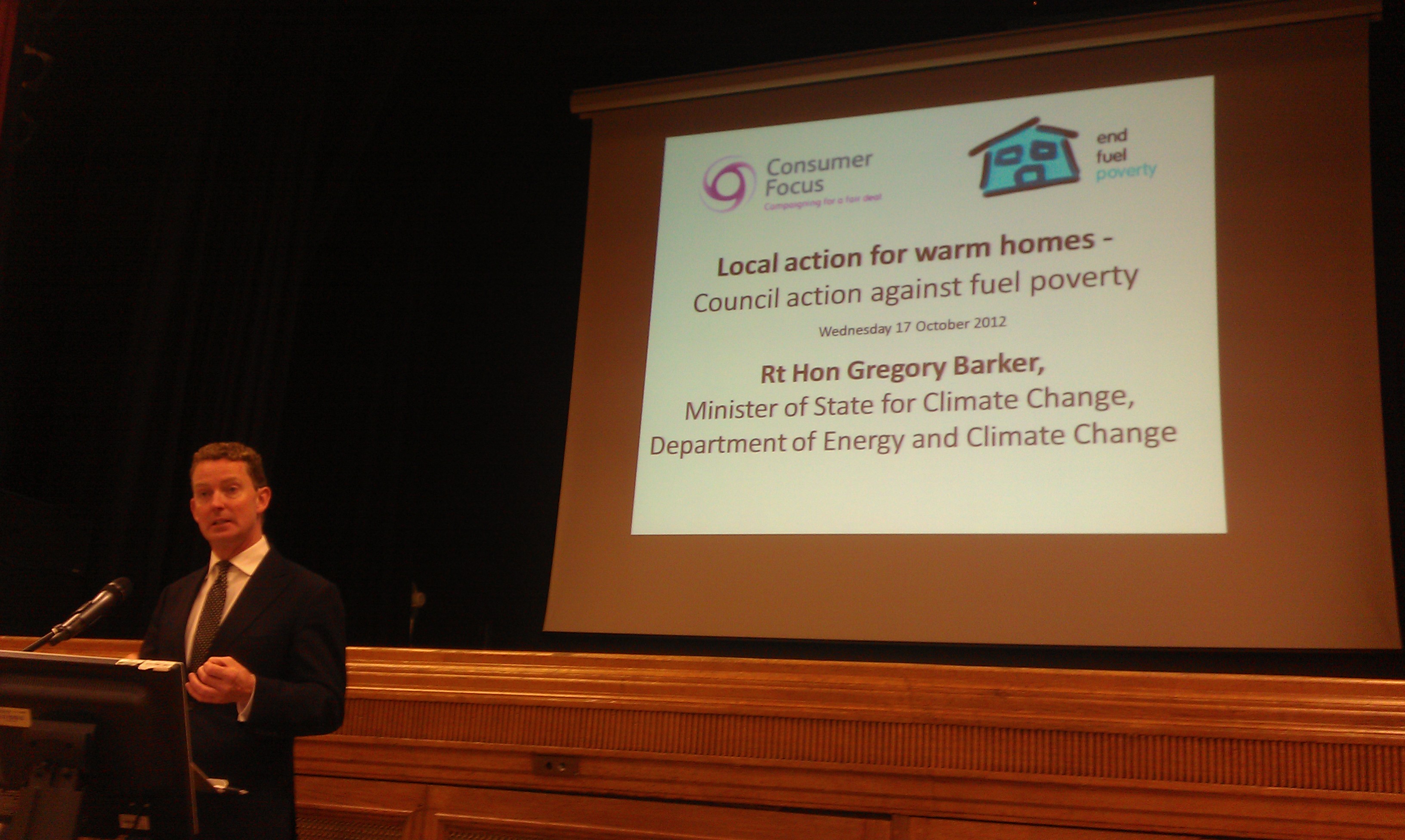Site search:
-
What’s new?
Energy for London Tags
Brent Buildings Camden Carbon Emissions CHP Cities Climate Adaptation Community Heating Community Initiatives Croydon Data DECC Decentralised Energy Distribution ECO Energy Costs Energy Efficiency Enfield FIT Fuel Poverty Funding Green Deal Hackney Haringey Housing Islington Lambeth Library Local Authorities Mayor Newham Ofgem Olympics Photovoltaics Planning RE:FIT RE:NEW Renewable Energy Retrofit Southwark Tower Hamlets Transport Waltham Forest Waste WestminsterEnergy Archives:
- February 2021 (1)
- January 2021 (15)
- December 2020 (15)
- November 2020 (9)
- October 2020 (3)
- August 2020 (5)
- July 2020 (3)
- June 2020 (4)
- April 2020 (10)
- March 2020 (5)
- February 2020 (2)
- January 2020 (3)
- October 2019 (1)
- September 2019 (4)
- August 2019 (2)
- July 2019 (1)
- August 2018 (1)
- November 2016 (8)
- October 2016 (8)
- September 2016 (2)
- August 2016 (8)
- July 2016 (14)
- April 2016 (12)
- March 2016 (16)
- February 2016 (8)
- January 2016 (4)
- December 2015 (1)
- November 2015 (1)
- October 2015 (16)
- September 2015 (3)
- June 2015 (1)
- May 2015 (1)
- April 2015 (1)
- March 2015 (1)
- February 2015 (1)
- January 2015 (1)
- December 2014 (18)
- November 2014 (4)
- August 2014 (8)
- July 2014 (7)
- June 2014 (25)
- May 2014 (8)
- April 2014 (4)
- March 2014 (12)
- February 2014 (7)
- January 2014 (13)
- December 2013 (11)
- November 2013 (15)
- October 2013 (15)
- September 2013 (18)
- August 2013 (5)
- July 2013 (20)
- June 2013 (33)
- May 2013 (8)
- April 2013 (16)
- March 2013 (25)
- February 2013 (14)
- January 2013 (20)
- December 2012 (23)
- November 2012 (23)
- October 2012 (25)
- September 2012 (14)
- July 2012 (12)
- June 2012 (43)
- May 2012 (20)
- April 2012 (8)
- March 2012 (40)
- February 2012 (39)
- January 2012 (40)
- December 2011 (22)
- November 2011 (40)
- October 2011 (33)
- September 2011 (48)
- August 2011 (40)
- July 2011 (58)
- June 2011 (41)
- May 2011 (80)
- April 2011 (38)
- March 2011 (33)
- February 2011 (25)
- January 2011 (24)
- December 2010 (3)
- November 2010 (7)
- October 2010 (6)
- September 2010 (7)
- August 2010 (1)
- July 2010 (2)
- June 2010 (4)
- May 2010 (1)
- March 2010 (3)
- February 2010 (3)
- December 2009 (5)
- November 2009 (2)
- October 2009 (3)
- July 2009 (3)
- June 2009 (1)
- April 2009 (1)
- March 2009 (1)
- February 2009 (1)
- January 2009 (1)
- December 2008 (2)
- October 2008 (1)
- September 2008 (1)
- July 2008 (1)
- March 2008 (2)
- January 2008 (2)
- October 2007 (1)
- September 2007 (3)
- July 2007 (1)
- March 2007 (1)
- February 2007 (3)
- November 2006 (3)
- August 2006 (1)
- February 2006 (1)
- May 2005 (1)
- February 2004 (1)
Tag Archives: Islington
£67.23m of DE projects to be delivered in London
22 April 2013: A useful update on some of London’s key decentralised energy (DE) projects being supported by the Mayor has been produced for the GLA Investment and Performance Board meeting taking place tomorrow (23 April). The Mayor’s Decentralised Energy Project Delivery Unit (DEPDU) is a three-year programme set up in August 2011 with €3.3m funding, 90% of which was secured from the European Investment Bank’s ELENA facility.
The paper (link to paper, direct here) sets out that the GLA has a contractual target with the EIB to deliver £67.23m of DE projects to market before the 3rd of August 2014. The following projects as of 31st December 2012 have been taken to market through the GLA’s Decentralised Energy for London programme and, as agreed with the EIB as eligible projects. Together, they represent £42.3m, or 64% of the final ELENA target.
| Project | Eligible CAPEX (£) | Construction completed | CO2 savings (t/year) | Project stage |
| Islington Bunhill Phase 1 | £6,499,107 | 2011 | 2,950 | Operational |
| Cranston Estate | £7,800,000 | 2011 | 1,200 | Operational |
| Crystal Palace CHP | £1,490,000 | 2011 | 1,850 | Operational |
| Olympic Fringe Extension | £1,350,000 | 2011 | 960 | Operational |
| Royal Free | £6,073,621 | 2012 | 4,060 | Operational |
| Brent South Kilburn | £17,170,000 | Unknown* | 835 | Procurement |
| Lewisham Goldsmiths College | £1,911,706 | 2014 | 947 | Construction |
| TOTALS | £42,294,434 | – | 12,800 | – |
The paper states that when “fully developed and in operation, these projects will contribute with 4.7 MW of installed electrical capacity (and 35.7 MW of installed thermal capacity (enough to provide heat and power to 6,000 homes) to London’s generation from DE sources and will save up to an estimated 12,800 tonnes of CO2 per annum.
“In addition, the DEPDU is also currently supporting the development of an additional 22 projects with a combined value of £304m. Of these, five are in advanced stages of development, and are expected to be brought to market within the following 12 months.”
| Project | Estimated CAPEX (£) | Construction completed | CO2 savings (t/year) | Project stage |
| Euston Road | £7,025,000 | 2014 | 4,594 | Procurement |
| Westminster PDHU / Whitehall | £5,480,000 | 2015 | 5,500 | Business case |
| SELCHP | £6,000,000 | 2013 | 3,395 | Construction |
| LSIP | £2,000,000 | 2014 | 1,584 | Procurement |
| Haringey North Tottenham | £8,060,000 | 2016 | 5,148 | Pre-feasibility |
| TOTALS | £28,565,000 | – | 20,200 | – |
When fully developed and in operation, the paper states “these projects will contribute with 3.2 MW of installed electrical capacity and 90 MW of installed thermal capacity (enough to provide heat and power to 14,000 and 4,500 homes respectively) to London’s generation from DE sources and will save up to an estimated 20,200 tonnes of CO2 per annum.”
The paper goes on to say that the “paper does not include projections on jobs created. However, it is our intention to incorporate estimates of jobs created for future reporting and we will work with GLA Economics to establish a robust methodology.”
Further information on many of these projects can be found by searching on this website.
Posted in Decentralised Energy, News
Tagged Brent, Camden, CHP, Decentralised Energy, Hackney, Haringey, Islington, SELCHP, Westminster
Leave a comment
FT: ‘London seeks energy supply licence’
14 March 2013: The GLA has recently approved a process to secure a junior – or ‘lite’ – electricity supply licence – the benefits of which are set out in an earlier post here.
The Mayor recently updated progress on this work stating that:
“Technical assessments of the services to be procured from the electricity market and regulatory matters needing to be addressed have been made. The GLA met Ofgem (the electricity regulator) at the beginning of February 2013 to enable a formal application for a licence.”
And the FT has today reported on this work stating: “The GLA is the first public authority to apply for a so-called Licence Lite, an electricity supply permit that would allow it to buy excess electricity from London’s boroughs and sell it back at cost price to other public bodies in the capital, such as the police or NHS hospitals.” The GLA press release is available here.
The report goes that:
“Several London boroughs run generators to power public buildings, such as Islington’s Bunhill Heat and Power project, which uses a gas-fired generator to heat homes and local swimming pools. Westminster operates two gas-fired generators in Pimlico that heat homes, businesses and three schools. Excess energy produced at these sites is returned to the National Grid through a mainstream supplier at a variable wholesale rate of about 5 pence per kWh. The GLA would offer 20 to 30 per cent more for the boroughs’ excess as a way of encouraging growth in the low-carbon energy infrastructure. Ofgem, the energy regulator, brought in Licence Lite in 2009 but no permit has yet been issued. Some blame uncertainty over the legal obligations a new supplier would face, as well as lack of interest from existing industry suppliers. Licence Lite holders are required to contract with a mainstream supplier to provide regulatory and operational support.”
“A dozen London boroughs, which together are capable of producing 76MW, could benefit from the scheme, which is intended for launch in 2014, the GLA said. If the measure is a success it would also be considered for private sector energy producers in London. By raising the returns on the energy produced by small suppliers, the GLA said, the move could help attract more than £8bn of investment in electricity infrastructure in the capital up to 2025.“
‘Groundbreaking plan to use excess heat from tube system for domestic electricity supply’
8 February 2013: Following on from the recent inauguration of the Bunhill heat and power scheme, the Islington Tribune newspaper reports that the council is looking to use waste “heat from London Underground that escapes through a vent in City Road…to supply new private homes being built nearby.” The proposal was discussed at the Council’s Executive meeting on 7 February where the borough’s Energy Strategy for 2013-16 was also set out. The papers presented at the meeting provide additional information on the heat offtake scheme:
“The network extension will be innovative by capturing waste heat from the London Underground tube tunnel vent and the electrical substations on City Road. £1m grant funding has been applied for and is now available from the European Commission (EC) to help part-fund this innovative extension of the Bunhill heat network. £2.7M council capital is required to match this funding and this is being taken forward as part of the 2013/14 budget process.”
Building on the existing Seasonal Health and Affordable Warmth (SHAW) plan, the Strategy paper additionally sets out that a borough Fuel Poverty Strategy will be developed by March 2013. Download Making Islington fairer in tough times: Energy strategy 2013 -16 here.
Also discussed at the Executive meeting were procurement details of community heating system on the Finsbury Estate.
Posted in Decentralised Energy, News
Tagged Community Heating, Decentralised Energy, Fuel Poverty, Islington
Leave a comment
Islington – “Heating rebate helps thousands”
8 January 2013: Islington news release: “Three-thousand council tenants with communal heating or hot water will receive a rebate of at least £145 per household next month, as the council prepares to pass on savings it has made in buying gas.
“Islington Council has secured an improved deal in its bulk purchasing of gas for estates with communal heating and hot water, which means the savings from the lower cost of gas can be passed on to tenants.” Read the full release here.
Bunhill Energy Centre Video
 December 2012: Islington has posted a really entertaining video on Youtube describing some of the background to the development of the Bunhill CHP Scheme, as well as the benefits being delivered to the local community through the provision of lower carbon, affordable, heat and power. The project has taken close to 10 years to come to fruition, and the district heat scheme extends across Finsbury Leisure Centre, Ironmonger Row Baths, and Stafford Cripps, St Lukes and Redbrick Housing Estates. Do watch if you get a chance!
December 2012: Islington has posted a really entertaining video on Youtube describing some of the background to the development of the Bunhill CHP Scheme, as well as the benefits being delivered to the local community through the provision of lower carbon, affordable, heat and power. The project has taken close to 10 years to come to fruition, and the district heat scheme extends across Finsbury Leisure Centre, Ironmonger Row Baths, and Stafford Cripps, St Lukes and Redbrick Housing Estates. Do watch if you get a chance!
Islington’s new energy centre brings power to the people
December 2012: Islington have officially inaugurated their council-owned CHP system which “will produce cheaper, greener heat for hundreds of residents in the south of Islington in competition to the big utility companies.”
The press release sets out that the Bunhill Energy Centre houses a 2 MWe gas-fired Combined Heat and Power (CHP) engine which is connected to a kilometre of new district heating network taking hot water to more than 700 local homes on the Stafford Cripps, Redbrick and St Luke’s estates, as well as the newly reopened Ironmonger Row Baths, and Finsbury Leisure Centre.
The efficiency of the new system is further improved by an on-site 115 metre-cubed thermal store (the tall cylinder seen above).
The energy centre was specially designed to minimise noise and adopted a “plug and play” method of construction with all the major components manufactured and prefabricated off-site in order to reduce disruption to residents.
The energy centre and heat network will be fully owned and managed by the council, and was funded by grants from the London Development Agency and the Homes and Community Agency. The council ownership and management of the scheme will help to maximise the benefits of the scheme for the local community and energy bill savings for residents. For more about the Bunhill Energy Centre and heat network see www.islington.gov.uk/heatnetwork
The Bunhill Energy Centre is part of Islington Council’s Decentralised Energy Programme and marks a return to energy production for Islington Council – for more than 70 years – from 1896-1969 – the borough had its own coal-powered station in Eden Grove, Holloway (more of which on this nice flickr post).
The launch event was covered by the BBC, and also local newspapers the Islington Tribune and the Islington Gazette.
25 heat network projects being supported in London
November 2012: A recent speech by Ed Davey, Secretary of State at DECC on the department’s emerging policy around heat energy highlighted how the efficient use of heat is being promoted in the capital through its promotion of district heating. Mr Davey stated:
“London contains an example of the potential. The Greater London Authority is supporting 25 heat network projects. These have the capacity to leverage over £230 million of investment.”
A recent Mayoral question provides a little more detail on where these schemes are:
“The Decentralised Energy Project Delivery Unit is currently supporting the development of 25 decentralised projects. The following lists the activities with the boroughs:
Projects at procurement: Brent and Camden;
Projects at post-feasibility: Croydon, Enfield, Haringey, Waltham Forest and Westminster;
Projects at feasibility: Southwark, Islington, Hammersmith and Fulham, Newham, Sutton;
Projects at pre-feasibility/energy master planning: Hillingdon, Ealing, and Westminster.”
Further information on Brent’s South Kilburn DE project can be found here.
Details of the innovative scheme being supported by Camden in Gospel Oak can be found here (and recent October newsletter here), which is using heat from a Combined Heat and Power (CHP) plant situated in the Royal Free Hospital, to provide low carbon affordable heat to nearby residents.
Other information can be found in the various borough heat map reports posted on www.londonheatmap.org.uk
Posted in Decentralised Energy, News
Tagged Brent, Camden, CHP, Community Heating, Croydon, Decentralised Energy, Ealing, Enfield, Hammersmith and Fulham, Haringey, Hillingdon, Hospitals, Islington, Newham, Southwark, Sutton, Waltham Forest, Westminster
Leave a comment
London should not be a ‘no-go’ area to suppliers meeting their energy efficiency obligations
17 October 2012: Over 100 people came together in Islington’s Assembly Hall for the End Fuel Poverty Coalition’s Local Action for Warm Homes event. The aim of the conference was to show how councils, working with the End Fuel Poverty Coalition, can play a central role in helping the Government meet its statutory target to eliminate fuel poverty (as set out in the Warm Homes and Energy Conservation Act 2000). Energy Minister Greg Barker MP addressed the audience on current Government action to tackle fuel poverty.
Energy for London asked the Minister about how proposals to change the definition of fuel poverty – which correctly take housing costs into consideration – will lead to a doubling in the number of fuel poor households in London (see previous post for further details). Mr Barker stated that:
- In terms of tackling fuel poverty London needs to recognised as a special case
- He would not allow London to be a “no-go area” for energy suppliers in meeting their energy efficiency obligations (especially in central London) simply because of the higher costs of delivery
- DECC had no specific solutions on tackling fuel poverty issues in London as yet – but the department has a good working relationship with the Mayor and that they would be following up on options following the conclusions of the current fuel poverty definition consultation.
Retrofit for the Future – London projects
September 2012: The Retrofit for the Future programme’s Low Energy Buildings database website has recently been updated. The database is a repository of low-energy building information created to help inform the planning and development of low energy new build and refurbishment. The website allows users to browse projects in the database, and create and edit projects if you have a log-in.
A projects map highlights schemes funded across the UK and direct links to the 11 London based retrofit schemes follow below.
Eco Hub at Lordship Recreation Ground, Haringey
Hawthorn Road – Metropolitan Housing Trust, Haringey
Focus House
The Muse – Islington
Mayville Community Centre
Tower Hamlets Passivhaus Retrofit
Camden Passivhaus – London’s first certified Passivhaus
PassivHaus Retrofit – Princedale Road
Lena Gardens
Hounslow Passivhaus Retrofit – Grove Road
One Planet Sutton Retrofit
Further information on the ‘Retrofit for the Future’ programme and evaluation of the projects submitted can be viewed here.
Posted in Energy Efficiency, News
Tagged Camden, Energy Efficiency, Hackney, Haringey, Housing, Islington, Kensington and Chelsea, Retrofit, Sutton, Tower Hamlets
Leave a comment
Socially Just Adaptation to Climate Change
July 2012: Islington took part in a Joseph Rowntree Foundation study into “local approaches to climate change across the UK, and the extent to which these take social justice issues into account.” Further information in briefing downloadable here.
New Climate Local Initiative Launched
 28 June 2012: Waltham Forest, Islington, Camden and Sutton are amongst the first 18 local authorities to sign up to a new ‘Climate Local Commitment’ launched today at the Local Government Association’s (LGA) annual conference. Climate Local “will see councils committing to their own local actions to reduce carbon emissions and improve their ability to protect people and services from the anticipated changes in the weather.”
28 June 2012: Waltham Forest, Islington, Camden and Sutton are amongst the first 18 local authorities to sign up to a new ‘Climate Local Commitment’ launched today at the Local Government Association’s (LGA) annual conference. Climate Local “will see councils committing to their own local actions to reduce carbon emissions and improve their ability to protect people and services from the anticipated changes in the weather.”
Climate Local will build on the Nottingham Declaration, launched in 2000, and the LGA news release states that “As part of the new scheme, local authorities will be sharing ideas and advice on the best ways to save money on their gas and electricity use and ensure there are preparations in place for keeping to a minimum disruption caused by extreme weather like snow, floods and heat waves.”
Further details are posted on the Climate Local webpage which includes the Climate Local Commitment form and also a Climate Local Information Pack for local authorities.
Ed Davey, the Secretary of State for Energy, spoke at the conference stating that “…the role of councils in energy and climate change policy is much, much greater than even the LGA may currently think…I want to set out three strategic roles for local authorities in energy and climate change. First, in buying energy. Second, in saving energy. Third, in generating energy.”
On the Green Deal, Mr Davey said: “Local authorities and communities, who have the trust and faith of local people, will be essential partners in delivering the Green Deal.
Local authorities are leading work on financing models and joining together to create community interest companies. Six are involved in the Green Deal Finance Company.
Some are taking huge leaps forward – like Birmingham, which is pushing ahead with a £1.5 billion Energy Savers scheme, or Newcastle, which is leading a Green Deal partnership scheme which spans the North East. The GLA is bringing together the London boroughs.“
Posted in News
Tagged Camden, Carbon Emissions, Climate Adaptation, Green Deal, Islington, Local Authorities, Sutton, Waltham Forest
Leave a comment



